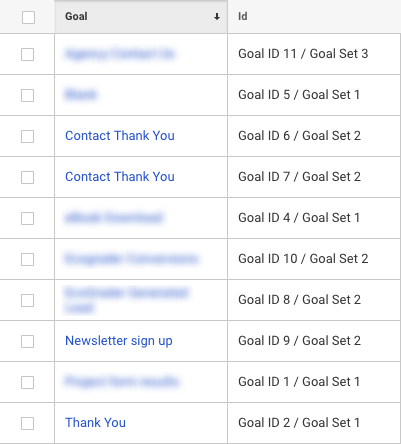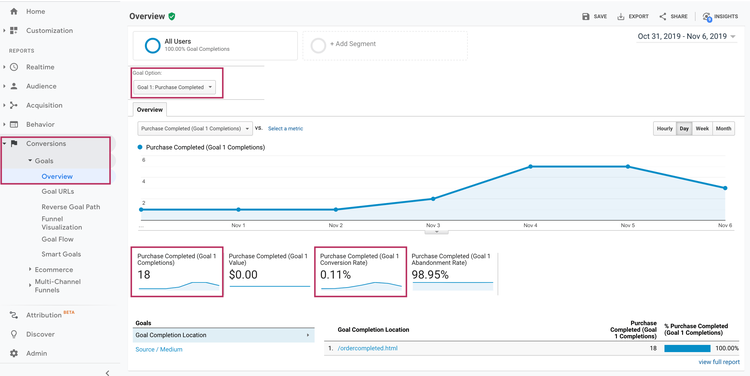Figure out What Data Is Google Analytics Goals Unable to Track
Figure out What Data Is Google Analytics Goals Unable to Track
Blog Article
Demystifying Google Analytics Limitations: Uncover What Information Goals Can not Track
In the realm of electronic analytics, Google Analytics stands as a powerful device that provides beneficial understandings right into site efficiency and user habits. From the complexities of user interaction with vibrant web content to the intricacies of cross-device customer trips, these limitations lost light on areas that may remain covered from typical analytics viewpoints.

Individual Interaction With Dynamic Web Content
Individual communication with vibrant content plays a vital role in comprehending user behavior on websites and maximizing the general user experience. Dynamic material describes aspects on a page that can alter without the demand for a complete web page reload. This consists of interactive aspects such as pop-ups, sliders, forms, and video clips that reply to customer actions in real-time. By tracking customer interactions with dynamic content, web site proprietors can obtain beneficial understandings into user interaction, choices, and behaviors.
Google Analytics offers various tools to track user interactions with vibrant web content, such as occasion tracking and virtual pageviews. Occasion monitoring enables you to keep an eye on certain individual actions, like clicking a button or watching a video clip, supplying data on how users connect with vibrant components. Online pageviews can be utilized to track interactions that do not lead to a brand-new web page tons, supplying a detailed sight of individual involvement with vibrant material. By examining this information, site owners can make informed choices to boost individual experience and drive conversions.
Cross-Device Customer Journeys
Just how can modern analytics devices track the complicated paths customers take across several devices in their online trips? Cross-device user trips provide a significant challenge for tracking and evaluating user actions properly. As customers engage with applications or websites using numerous devices such as tablets, smartphones, and desktops, it becomes vital to comprehend just how they move in between these platforms to enhance individual experience efficiently.
Google Analytics encounters limitations in tracking cross-device user journeys because of privacy issues and technical restraints - what data is google analytics goals unable to track. While it can offer insights into individual devices' communications, tracking a smooth individual journey across multiple tools continues to be an obstacle. This constraint can lead to incomplete data and fragmented customer insights, making it challenging for services to create a unified view of the consumer trip
To resolve this concern, services can use advanced analytics devices that use cross-device monitoring abilities, enabling them to gain an extra alternative understanding of customer habits. By leveraging these tools, organizations can connect the gap in tracking cross-device individual trips and maximize their electronic approaches for a seamless customer experience.
Offline Conversions and Acknowledgment
As companies navigate the difficulties of tracking cross-device user trips, an additional essential aspect to take into consideration is the realm of offline conversions and acknowledgment in the realm of data analytics. While Google Analytics provides useful insights right into online individual habits, it fails when it pertains to tracking conversions that occur offline. This restriction poses a considerable challenge for services that have Your Domain Name both online and offline sales channels.
Offline conversions, such as purchases made in physical shops or with phone call facilities, are necessary to comprehending the full client journey. Without the capability to attribute these offline conversions to details on-line interactions, services might struggle to accurately measure the effect of their electronic marketing efforts.
To resolve this gap, organizations can explore alternate remedies such as incorporating CRM systems with online analytics devices or using special coupon codes that can be traced back to online projects. By linking the void between online and offline information, organizations can gain an extra extensive understanding of their clients' habits and enhance their total marketing methods.
Person Individual Recognition
In the world of information analytics, the capacity to accurately identify individual users across numerous on the internet touchpoints is a vital difficulty for services seeking to individualize and optimize their marketing approaches. While Google Analytics supplies valuable insights into customer actions and communications, it drops short in enabling the recognition of details people as a result of privacy issues and technical limitations. Google Analytics uses one-of-a-kind identifiers such as cookies to track customer sessions and behavior, but these do not equate to recognizing specific users in a personal sense.

Data From Secure Pages
Regardless of the enhancing frequency of safe pages on sites, getting data from these encrypted resources presents an one-of-a-kind challenge for electronic analytics systems like Google Analytics. Secure pages, shown by HTTPS in the URL, secure data exchanged in between the user's web browser and the website's web server to ensure personal privacy and security. While this security is important for safeguarding sensitive details, it likewise poses restrictions for tracking individual actions and event analytics data.
Google Analytics deals with challenges in accumulating comprehensive information from secure web pages because of the security methods in place. Because of this, particular data points such as reference sources, keyword searches, and even some customer interactions might not be completely recorded when individuals access an internet site through a protected connection. This restriction can influence the precision and efficiency his response of the information evaluation, bring about gaps in comprehending individual actions and choices on safe and secure pages.
To navigate this difficulty, electronic experts may require to discover alternative monitoring approaches or take advantage of various other devices particularly made to collect understandings from protected pages. By adapting approaches to fit these constraints, services can still obtain important analytics in spite of the constraints offered by encrypted links.
Conclusion
In conclusion, Google Analytics has constraints in tracking customer communication with dynamic material, cross-device individual trips, offline conversions, individual customer recognition, and data from safe and secure pages. These limitations impede an extensive understanding of user behavior and might bring about voids in information evaluation. In spite of its useful understandings, Google Analytics might not provide a total image of individual involvement throughout numerous touchpoints. It is essential for services to be conscious of these constraints and consider supplementary tools for a more alternative sight of their information.
Individual communication with dynamic web content plays a crucial function in recognizing individual actions on web sites and optimizing the general customer experience. By tracking user interactions with vibrant content, site proprietors can gain important understandings right into user interaction, choices, and behaviors.
Google Analytics utilizes special identifiers such as cookies to track customer sessions and behavior, yet these do not equate to determining specific customers in an individual sense.
As an outcome, particular information factors such as referral sources, keyword searches, and even some individual communications might not be fully captured when users access a web site via a secure connection.In conclusion, Google Analytics has restrictions in tracking customer communication with vibrant material, cross-device individual trips, offline conversions, specific customer recognition, and data from protected web pages.
Report this page